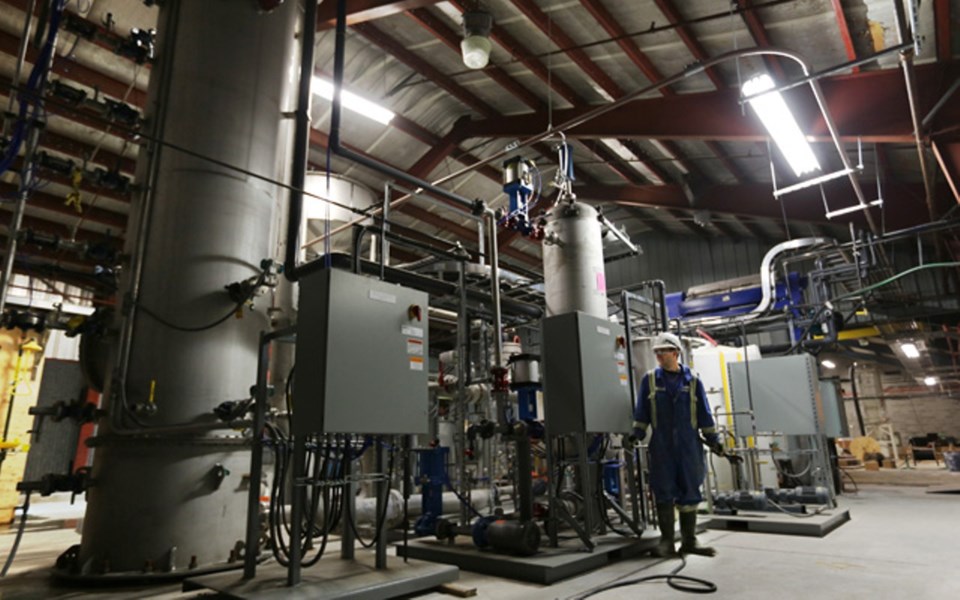Local green tech company Carbon Engineering is planning to ask councillors for permission to put a fuel production plant between the airport and the landfill.
This is a separate project by the company to expand its current oceanfront operations in the Squamish Valley.
A memo introduced to councillors April 3 breaks down the details of the plan. Carbon Engineering hopes to operate the plant in two phases, according to the memo.
The first phase would expand the existing carbon capture operation with an air-to-fuel facility that would be for demonstration purposes to prove the technology is commercially viable and produce around two barrels of fuel per day, with storage for 60 barrels.
The second phase would be moving to commercial production in the Squamish Valley, upping output to an estimated maximum of 2,000 barrels per day.
Storage for fuel would be capped at 28,000 barrels, according to the memo, and there would be 10 fuel transport pickups per pay.
The company uses emerging technology to capture CO2 from the atmosphere and turn it into liquid fuel.
The project is estimated to consist of an office and lab building, with air capture and fuel synthesis equipment located outdoors on concrete pads, and would employ around 100 people.
The 60-acre site is part of the Official Community Plan’s “Debris Flow Hazard Area” and the “Cheekeye Fan Special Study Area,” meaning it won’t currently be considered because of landslide risk.
Based on an engineering report from 2015, the company says most of the project would not be affected by a debris flow.
In 2017 councillors decided that no new zoning changes would be considered in the area until the District has created a Cheekeye Fan development control policy. That decision would need to be rewritten to allow for the project to go forward.
In the memo, staff suggests three different options for councillors.
Option A requires a finalized Cheekeye Fan hazard assessment or risk assessment done by Carbon Engineering. Option C is to wait until the District can finish its own new development control policy for the Cheekeye Fan.
A third option is to rely on a “site-specific hazard assessment” done by Carbon Engineering, with results that are peer reviewed.
Caron Engineering has said they can only work with the third option, according to the memo.
“The applicant has indicated that it is likely that the time and resources required for Options A and B would prevent Carbon Engineering from proceeding and that an alternate site outside of the community would be the only other solution,” reads the memo.
A committee discussion on the memo was scheduled April 3 but postponed until a later date.



